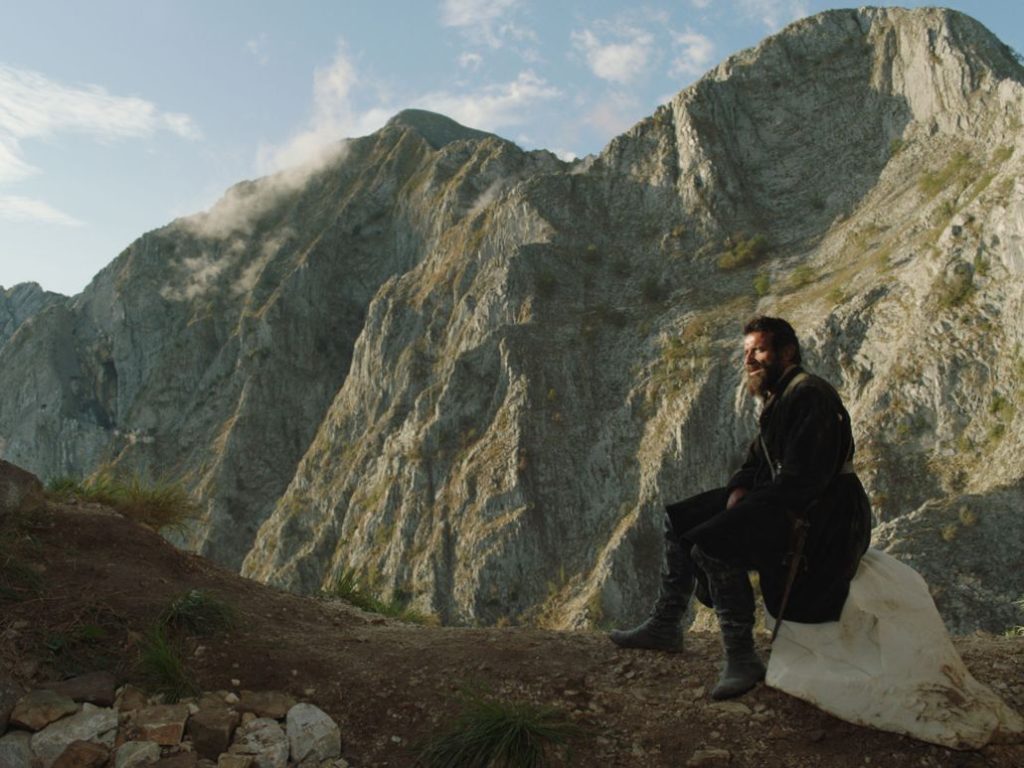At 83, Andrei Konchalovsky, hailed as one of Russia’s most prominent cineastes, shows no sign of slowing down.
With a gargantuan budget of 13 million, and running just short of two-and-a-half hours in length, ‘SIN’ is a tedious exercise in philosophizing on the ways in which genius often borders on the fringes of madness. It traces the intricacies of papal politics and the difficult love affair between the Roman Catholic Church and high art. Michelangelo (Alberto Testone) is in over his head with commissions. From the facade of the Saint Peter’s Basilica, to frescoes, the Tomb of Pope Julius II, he’s wearing himself out, all the while struggling to strike a balance between keeping the wealthy Pope Leo X (Simone Toffanin) happy and still maintaining his allegiances.
Cinematographically, each frame is painterly, each shot easily a mockup of any 16th century painting. Devastatingly beautiful landscapes shot across Italy by DOP Aleksandr Simonov — from Rome to Monte Altissimo di Nago — are compositionally perfect and squeezed into the always-effective academy ratio. The plot, however, moves with the same casualness as reading Dante himself.

The film takes an unusual interest as the central focus of Michelangelo’s life, one that serves as not only an albatross to bear, but a solid metaphor to shelve in the tortured artist canon. What is it, precisely? Well, it’s a block of marble from the Italian region of Carrara dubbed the moniker ‘il monstro’ for not only its gargantuan size, but the promise it carries. That same piece of stone just so happens to be what would later become Michelangelo’s Pietà. Sculpted in one sole, hunk of slab, it requires dozens of skilled men to hoist it down a quarry, winds up costing lives, and insulting the artist’s powerful investors along the way.
‘SIN’ ponders on the true cost of art, but also its many indulgences. The reference to Andrei Rublev, the classic Tarkovsky film he co-wrote, is as hard to miss as the marble slab itself.
With intricate sets in spectacular locations across many picturesque landscapes, a smattering of livestock and medieval fanfare in each shot (As well as, for whatever reason, an elephant) the film misses no aesthetic points. But, why the elephant?
“‘SIN’ is a tedious exercise in philosophizing on the ways in which genius often borders on the fringes of madness “
You’d think the task of directing such a demanding production would be enough to keep the Moscow native busy, and yet, this isn’t the only Konchalovsky film on the circuit right now. His latest, ‘Dear Comrades!’ a black-and-white drama on the demands of Soviet-era Russia is gaining festival traction as the country’s Oscar submission. ‘Dear Comrades!’ overshadows the prosaic pacing of ‘SIN’. Perhaps Konchalovsky, though masterful in rigid technical and visual form, is at his best when he sticks to his roots.
Alberto Testone’s Michelangelo is an angry, worn one, constantly slurring in curses and quoting Dante Alighieri under his breath, and disturbed by morbid hallucinations and the pursuit of ‘divinity’. This portrayal of the master painter is likened to a jester, as he spends the course of the film promising impossible deadlines to his financiers, while succumbing to fits of rage and desperation.
Why he’s so downtrodden is evident: his gifts are constantly overlooked, he barely makes a livable wage, and is referred to rudely as ‘impazzito’ one minute, then ‘maestro’ the next. It seems as if all anyone can seem to talk or worry about in the film is anything but the art itself. Instead, the concern lies in conflicting allegiances, the papal pressure, financing, betrayal, and expediting masterpieces faster than they can be conceived.
Konchalovsky ingrains the grime and hypocrisy of the era so cleanly, you wind up only thinking about how grateful you are not to live in the Renaissance era.
An Italo-Russian co-production with Rai Cinema and the Russian Ministry of Culture, this film visually feels like watching art. The final act of the film strings the banalities of the film together, redeeming the slow-burn pacing in a stunning ending that gives new meaning to the work of the misunderstood artist. Still, the technical and classical skill of the auteur isn’t enough to make up for the stubborn, taxing narrative thread.
‘SIN’ is available on virtual cinema now.









